Retiring in Mexico from the USA has become an increasingly popular choice for many Americans looking to enjoy a slower pace of life, a lower cost of living, and beautiful surroundings. With its rich culture, stunning landscapes, and affordable healthcare, Mexico offers a welcoming environment for retirees seeking adventure and relaxation.
The proximity to the United States makes Mexico an especially attractive destination, allowing for easy travel back and forth. Plus, Mexico’s cost of living is significantly lower than many U.S. cities, which means your retirement savings can stretch further, offering a better quality of life.
In this guide, our team of legal experts will walk you through the steps to retiring in Mexico – from visa requirements to residency options, cost of living, and how to adapt to life in a new country. Whether you’re considering a part-time stay or a permanent move, we’ll cover all the essential details to help you plan your dream retirement in Mexico.
Table of Contents
Benefits of Retiring in Mexico from the USA

Retiring in Mexico offers numerous advantages that make it a compelling choice for many U.S. citizens. From the lower cost of living to the high quality of life, here are some key benefits that retirees can enjoy when making Mexico their home:
Lower Cost of Living
One of the most attractive reasons to retire in Mexico from the USA is the significantly lower cost of living compared to the U.S. Whether you’re in a big city like Mexico City or a smaller town, everyday expenses such as housing, groceries, and dining out can be a fraction of what you’d pay in the U.S. Rent is particularly affordable, with many retirees finding spacious homes or apartments at prices much lower than what they would expect back home. This allows retirees to enjoy a comfortable lifestyle without stretching their savings.
High Quality of Life
Mexico offers an exceptional quality of life, with a pleasant climate year-round in many regions, especially along the coasts and in highland areas. The culture, friendly locals, and vibrant communities make it easy to form connections and immerse yourself in local traditions. Whether you enjoy exploring historic sites, enjoying fresh local food, or relaxing by the beach, Mexico’s lifestyle offers a rich variety of activities to suit all interests.
Affordable Healthcare
Mexico’s healthcare system is one of the top reasons many Americans retire here. Medical care in Mexico is of high quality, and prices are much more affordable than in the U.S. With a range of private and public healthcare options, retirees can access excellent treatment without the burden of high medical bills or expensive insurance premiums.
Proximity to the United States
Mexico’s proximity to the U.S. makes it an ideal destination for retirees who want to stay close to family or travel back home easily. Major cities like Mexico City, Guadalajara, and Monterrey are well-connected by direct flights, allowing for short and inexpensive trips to the U.S.
Variety of Destinations
Whether you prefer a bustling city, a quiet village, or a coastal retreat, Mexico offers a wide variety of living environments. Popular destinations for retirees include coastal towns like Puerto Vallarta and Playa del Carmen, the colonial charm of San Miguel de Allende, and the cultural richness of Mérida.
Mexico Retirement Visa Requirements
When planning to immigrate to Mexico, obtaining the right visa is an essential step in ensuring a smooth transition. Mexico offers a specific visa designed for retirees, as well as other options that may suit different circumstances. Below is a table outlining the main types of visas available for retirees and the steps involved in the application process.
Visa Options for Retiring in Mexico from the USA
| Visa Type | Description | Eligibility Requirements | Application Process |
| Temporary Resident Visa (Retirement Visa) | Designed for retirees who want to live in Mexico for more than six months but less than four years | 1. Proof of monthly income (at least $4,500 USD or its equivalent in pesos). 2. Bank statements showing sufficient savings (around $73,000 USD or equivalent). 3. Be already retired | 1. Gather proof of income and bank statements. 2. Submit application to a Mexican consulate in the U.S. 3. Attend an interview and submit biometrics. 4. Once approved, travel to Mexico 5. Within Mexico, exchange the visa for the Final Temporal Resident Id Card |
| Permanent Resident Visa | For retirees wishing to make Mexico their permanent home. Can be applied if they meet the economic solvency | Economic Solvency 1. Proof of monthly income (at least $7,300 USD or its equivalent in pesos). 2. Bank statements showing sufficient savings (around $293,000 USD or equivalent). 3. Be already retired | 1. Gather proof of income and bank statements. 2. Submit application to a Mexican consulate in the U.S. 3. Attend an interview and submit biometrics. 4. Once approved, travel to Mexico 5. Within Mexico, exchange the visa for the Final Permanent Resident Id Card |
| Permanent Resident by time as Temporal Resident | For retirees wishing to make Mexico their permanent home. Can be applied after 4 years on a Temporary Resident | 1. Proving that you held a Temporal Residency for 4 years 2. Start the process with at least 30 days of anticipation to the expiry date | 1. Submit application to the Immigration Authorities in Country 2. File the petition 3. Attend an interview and submit biometrics and issuance of the Final Permanent Id Card |
| Family Visa (Dependent Visa) | If you are married or have dependent family members, this visa allows them to accompany you. | 1. Proof of relationship (e.g., marriage certificate, birth certificate for children). 2. Same income requirements as the Temporary Resident Visa. | 1. Submit proof of relationship and financial stability. 2. Apply at a Mexican consulate or in-country. 3. Accompanying dependents will receive the same visa status. |
Top Locations for Americans Retiring in Mexico
Mexico offers a wide variety of destinations that cater to retirees, each with its unique appeal. From serene beach towns to vibrant cultural hubs, retirees can choose the lifestyle that best suits their preferences. Here are some of the top locations for those looking to retire in Mexico from the USA:
Puerto Vallarta
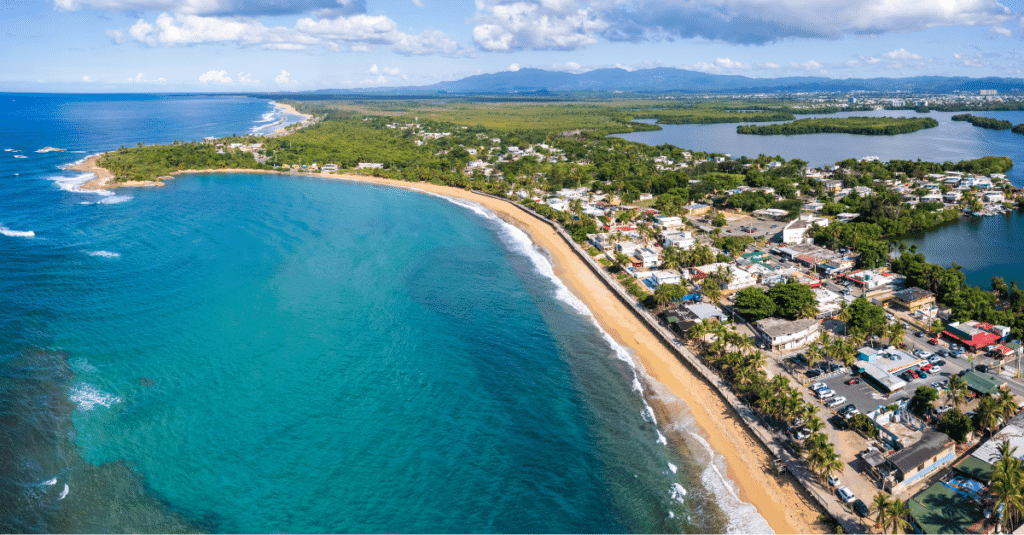
Location: Pacific Coast, Jalisco
Best For: Beach lovers and expats seeking a laid-back lifestyle with modern amenities.
Puerto Vallarta is one of the most popular retirement destinations in Mexico, known for its beautiful beaches, vibrant nightlife, and strong expat community. The town blends the charm of a traditional Mexican coastal town with modern conveniences, including excellent healthcare facilities, international restaurants, and a thriving arts scene. Puerto Vallarta offers a relaxed pace of life, making it an ideal destination for those looking to enjoy sunny days by the ocean.
Lake Chapala
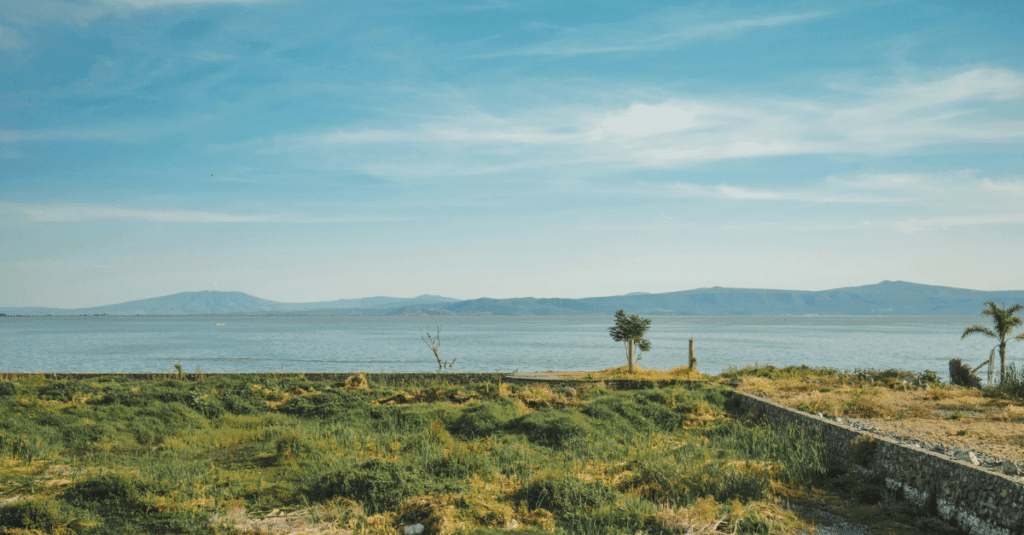
Location: Jalisco (Central Mexico)
Best For: Nature lovers, retirees seeking tranquility, and those on a budget.
Lake Chapala, the largest freshwater lake in Mexico, offers a peaceful retreat for retirees. The town of Ajijic, located on the shores of the lake, is a popular choice for expats due to its cool climate, beautiful mountain views, and affordable cost of living. The area has a small but active expat community and a laid-back atmosphere, perfect for those looking to escape the hustle and bustle. The proximity to Guadalajara, a large city with excellent healthcare and services, adds to Lake Chapala’s appeal.
San Miguel de Allende
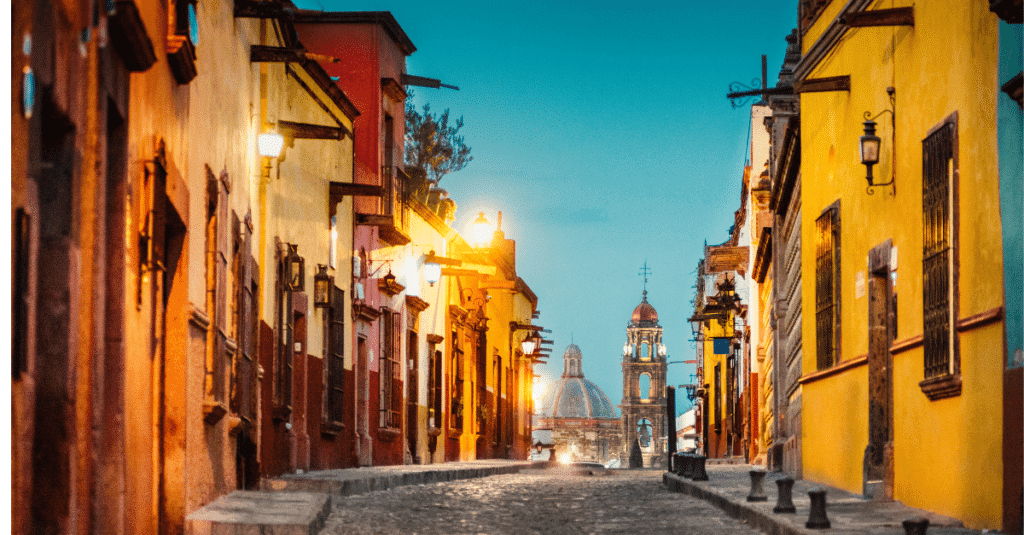
Location: Guanajuato (Central Mexico)
Best For: Retirees who enjoy a mix of culture, history, and a vibrant expat community.
San Miguel de Allende is a UNESCO World Heritage site famous for its colonial architecture, cobblestone streets, and thriving arts scene. This charming town offers a mix of traditional Mexican culture and modern amenities, including international restaurants, galleries, and expat-run businesses. The mild climate, affordable cost of living, and rich history make it a popular destination for retirees who enjoy cultural experiences and community involvement.
Playa del Carmen
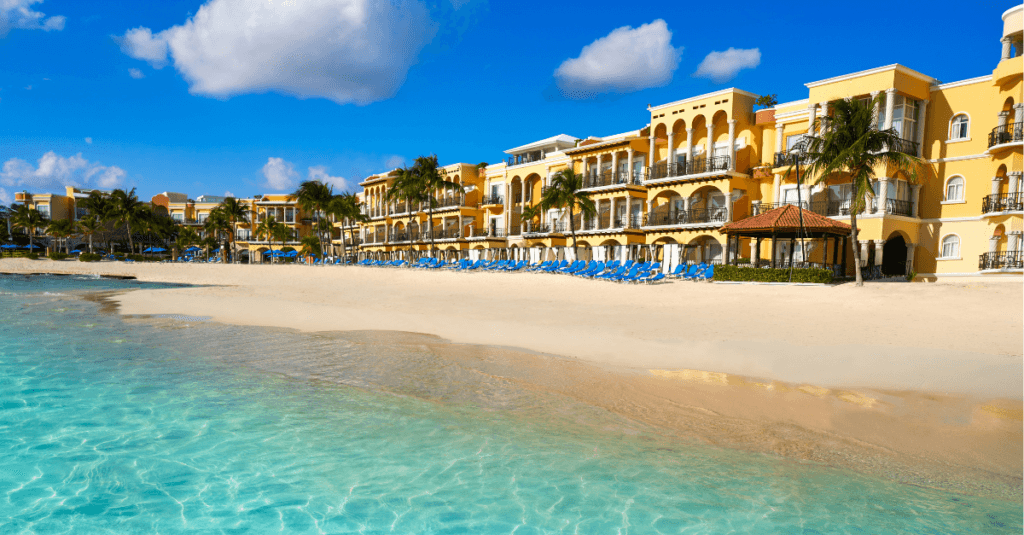
Location: Quintana Roo (Yucatán Peninsula)
Best For: Those who prefer a lively, cosmopolitan beach town with access to the Caribbean.
Playa del Carmen has grown into one of the most popular beach destinations in Mexico, offering stunning beaches, a bustling nightlife, and a variety of international dining options. The town is part of the Riviera Maya, a region known for its clear blue waters, luxurious resorts, and diverse expat community. It is ideal for retirees who want to combine beach living with an active social scene and proximity to other tourist destinations like Tulum and Cancun.
Mérida
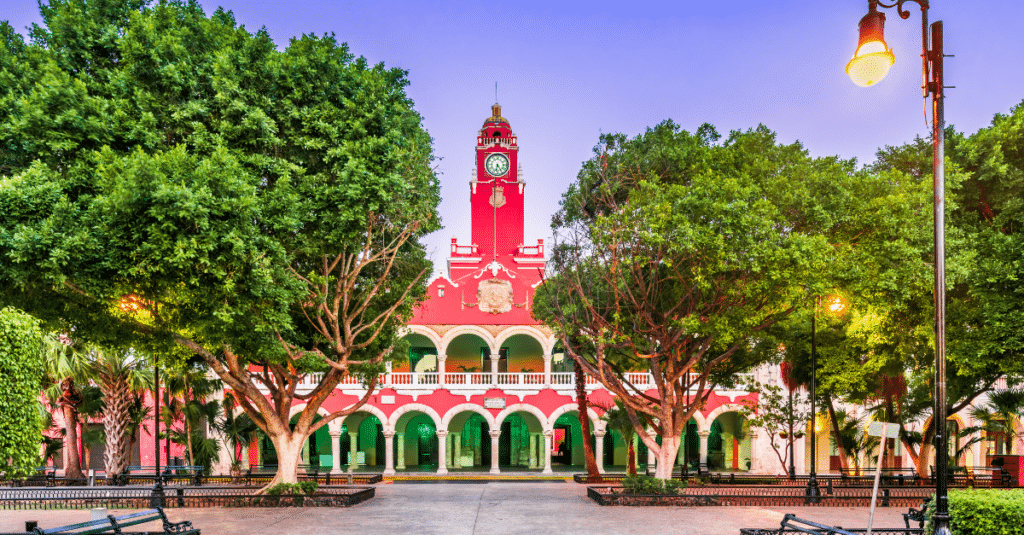
Location: Yucatán Peninsula
Best For: Retirees seeking a quiet, affordable city with a rich history and low cost of living.
Mérida is often considered one of the safest and most affordable cities for retirees in Mexico. Known for its colonial architecture, rich Mayan history, and warm climate, Mérida offers a slower pace of life while still being a modern city with all the amenities retirees need. The Yucatán Peninsula is a popular spot for those interested in ancient ruins, local markets, and a low-key lifestyle. With its low crime rate, strong healthcare system, and growing expat population, Mérida has become a top choice for many retirees.
Taxes for American Retirement in Mexico
When retiring to Mexico from the USA, it’s essential to understand your tax obligations both in Mexico and in the United States. While Mexico offers a relatively favorable tax environment for retirees, it’s important to be aware of the rules governing income, pensions, and foreign earnings. Here’s a breakdown of the tax considerations for Americans retiring in Mexico:
Taxation in Mexico
As a retiree in Mexico, you are considered a resident for tax purposes if you spend more than 183 days per year in the country. Mexico has a progressive income tax system, which means that the tax rate increases as your income rises. However, the country does not tax certain types of foreign income, such as U.S. Social Security benefits or pensions, which is a key advantage for American retirees.
Income Tax: If you’re receiving income from sources within Mexico, such as rental income, wages, or business profits, you will be subject to Mexican income tax. The tax rates range from 1.92% to 35%, depending on your income level.
Foreign Income: As a tax resident of Mexico, your worldwide income may be subject to Mexican taxation. However, certain foreign income sources, like U.S. Social Security benefits and pensions, are generally exempt from Mexican taxes. The taxability of other foreign income (e.g., U.S. retirement funds or investments) depends on the specific tax treaties between Mexico and the U.S.
Tax Residency: If you live in Mexico for more than 183 days in a year, you are likely considered a tax resident of Mexico, meaning your worldwide income (except for some specific exemptions) could be taxed in Mexico.
Capital Gains Tax: If you sell property in Mexico, you may be subject to capital gains tax on the sale. However, there are exemptions for primary residences if the sale proceeds are reinvested into another property in Mexico.
Frequently Asked Questions: Retiring in Mexico from the USA

Can I receive my US Social Security benefits in Mexico?
Yes, U.S. Social Security benefits can be received in Mexico. The Social Security Administration (SSA) allows retirees to have their payments directly deposited into a U.S. or Mexican bank account, and Social Security benefits are typically not taxed by Mexico, though they remain taxable in the U.S.
What is the average cost of healthcare for US retirees in Mexico?
Healthcare in Mexico is much more affordable than in the U.S. Private health insurance typically costs between $1,000 and $3,000 per year, and doctor visits range from $30 to $50. Hospital stays and major medical procedures are also significantly cheaper than in the U.S., making Mexico a cost-effective option for retirees seeking quality care.
How safe is it to retire in Mexico from the USA?
Safety varies by region, but many popular retirement locations in Mexico, such as Puerto Vallarta, Lake Chapala, and San Miguel de Allende, are considered very safe. While it’s important to remain cautious and avoid certain areas, most expat communities in Mexico experience a low crime rate and a high quality of life.
What types of property rights do foreigners have in Mexico?
Foreigners can own property in Mexico, but properties near the coast or borders require a fideicomiso (bank trust) for ownership. Outside these restricted zones, foreigners can hold property titles directly. It’s important to consult with a real estate lawyer to navigate the process properly.
How does the cost of living in Mexico compare to that in the USA?
The cost of living in Mexico is generally much lower than in the U.S. Housing, groceries, utilities, and dining out are all more affordable, allowing retirees to live comfortably on a budget of $1,500 to $2,500 USD per month in many locations, compared to significantly higher costs in the U.S.
Ready to Retire in Mexico from the USA?
Retiring in Mexico from the USA offers many benefits, including a lower cost of living, affordable healthcare, and a high quality of life. You can enjoy beautiful beach towns, vibrant cultural hubs, and a welcoming expat community. With a variety of visa options and the ability to receive U.S. Social Security benefits, Mexico is an increasingly popular destination for American retirees.
However, it’s essential to understand the visa requirements, tax obligations, and property laws before making the move. From choosing the right location to navigating legal and financial matters, Lexidy is here to help you make the most of your retirement in Mexico.
Ready to get make your retirement in Mexico a Reality? Fill out the form below to get started!

